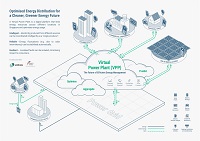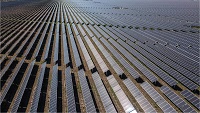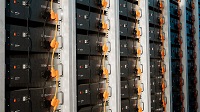We refer to Mr Leong Mun Wai’s letter, “Time for a close look into why Hyflux tanked. This was no typical business failure” (BT, 26 Mar). He suggested that vesting contracts and policy changes led to lower electricity prices which in turn was a key contribution factor to Hyflux’s current situation. Mr Leong has drawn the wrong conclusions.
In 2009, the Energy Market Authority (EMA) offered the Liquefied Natural Gas (LNG) vesting scheme to power generation companies (gencos) as a voluntary option to encourage the uptake of LNG. Gencos opted into the scheme based on their own commercial considerations. While EMA only offered up to 1.2 million tonnes per annum of LNG under vesting contracts, the gencos decided to buy more than twice as much LNG and build additional generation capacity. At that time, wholesale electricity prices were high. The subsequent increase in generation capacity led to a decline in wholesale electricity prices in recent years.
Hyflux does not have any LNG vesting contracts. Hyflux decided to build its power plant after the LNG vesting contracts were awarded to the other gencos. When Hyflux made this decision, information on the plans by other gencos to increase their generation capacity was publicly available. Hyflux’s present financial situation is a result of its own commercial decisions, with full knowledge of the gas supply situation and electricity generation market. It is incorrect for Mr Leong to claim that Hyflux’s financial problems were caused by “an unexpected domestic policy change”. There is also no justification for EMA to “render relief” to Hyflux using public resources, as Mr Leong had suggested.
EMA will continue to promote economic efficiency and competition, and ensure a level playing field for stakeholders in the electricity market.
Dorcas Tan (Ms)
Director
Market Development and Surveillance Department
Energy Market Authority
Time for a close look into why Hyflux tanked. This was no typical business failure - Leong Mun Wai (Business Times)
26 Mar 2019
I REFER to the recent news reports on Hyflux. I would like to call for a thorough assessment of the company's failure and to note the plight of the perpetual securities investors because this is not a typical business failure.
First and foremost, it is a business failure and the responsibility of the management led by Olivia Lum cannot be denied. With the benefit of hindsight, we can accuse her of deviating from her core business of water treatment to power generation. Even if the heavy use of electricity for the water business justifies some stake in a power plant, why didn't she sell away part of the ownership to reduce the company's risk? She also committed the company to a high-priced gas supply contract with no corresponding mechanism to protect the company against the decline of the electricity price.
Perhaps the management had been blinded by the potential of huge profits if electricity prices had stayed at around S$200 per MWh, the price level in 2012 when the decision was made. This would be a valid reason for her being prepared to operate the water desalination business at a loss.
Secondly, we also know that the collapse of the wholesale electricity price was the single most important reason for Hyflux's failure. We now know that the collapse in electricity price was the direct result of the vesting contracts given to the other gencos in return for their support to sign long term take-or-pay gas supply contracts from the LNG terminal, itself another national project.
As a result of the vesting contracts, the existing gencos expanded capacity rapidly, resulting in a reserved margin of 80 per cent instead of the normal 30 per cent, hence precipitating the price collapse.
Business managers are trained to assess market risk, but it is not fair to push all responsibility to them when the business is severely damaged by an unexpected domestic policy change.
As drastic change on both the demand and supply sides are unforseen because local power consumption growth has been steady, there is no way for Hyflux or any financial analyst to have anticipated the collapse in the electricity price to about S$50 per MWh in 2016, when Hyflux's power plant started to sell its output.
Obviously the Energy Market Authority also did not render relief to Hyflux at an early stage to buffer it from the unintended results of the vesting contracts.
Thirdly, on the other hand, financial analysts of the financial institutions who sold the perpetual securities should have anticipated the financial risks to unsophisticated CPF investors when the securities were issued in 2016, because by then, the electricity price had collapsed. In fact, the proceeds of the 2016 issue was used to redeem two old perpetual securities issued in 2014, only to the more sophisticated accredited and institutional investors.
Based on the above, I urge the government to consider nationalising Hyflux as the effect of the public decisions was disproportionately large and could not have been anticipated by the private managers of Hyflux. Given time to restructure, Hyflux's strategic and financial value could be no less than that of Olam, which received billions of dollars of support from Temasek in 2014.
The Monetary Authority of Singapore should look into the financial analyses and selling processes of the financial institutions and ask why they chose to sell the new issue to unsophisticated investors when the financial health of Hyflux had deteriorated in 2016 compared to 2014.















